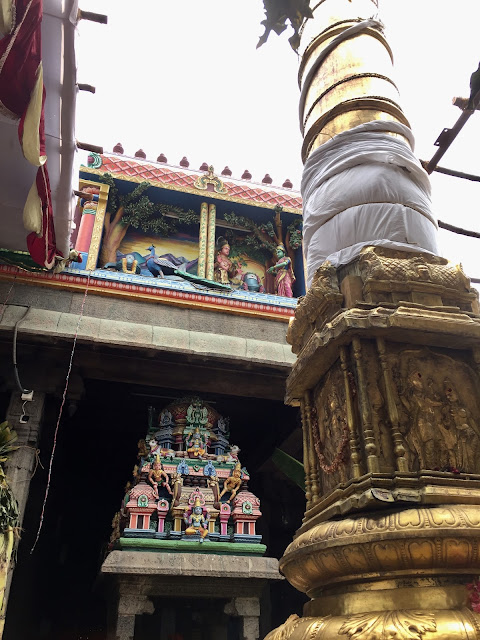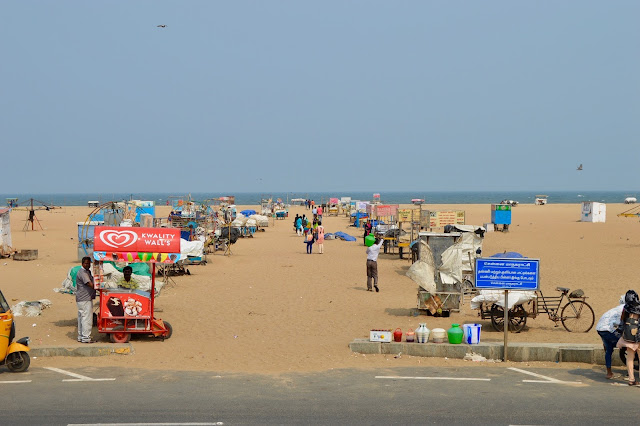India possesses so many temples like no other country I have visited. In Chennai, the Kapaleeswarar Temple will leave you with your mouth open as you notice in detail the several figures that compose this colourful Dravidian-style temple. They are like the storytellers of Hinduism. Established in the 7th century, and later on rebuilt, the temple is dedicated to Shiva, one of the three principal gods - Brahma, who creates the universe; Vishnu, who preserves the universe; and Shiva, who destroys the universe. The form of Shiva's consort, Parvati, is also worshipped there, and in the same way, Ganesha’s, the son of both. Ganesha is one of the most important (and popular) gods in Hindu mythology, but also worshipped in Jainism and Buddhism, other religions practiced in India. He is highly recognisable for his elephant head and human body, representing the soul and the physical respectively, and whose story got quite famous as entertainment for kids.
Directly in front of the temple, there’s an open area with water and many steps that serve as ground for devotional events.
From there further, we took the train to Marina Beach, a natural urban beach in the city, where the Madras Lighthouse is located. Facing the Bay of Bengal, this known landmark allow visitors, in exchange for a fee, to go up and enjoy a beautiful panorama. The Statue of Gandhi is also to be found nearby. Like everywhere in India, the concept of bathing (at least as westerners know) is not allowed, but you can jump in anytime in your own clothes. The Church of Our Lady of Light, built in the 16th century by the Portuguese explorers over the tomb of Saint Thomas (one of the twelve apostles of Jesus), is one of the oldest Roman Catholic Churches in Chennai and only 15 min far from the lighthouse.
Next Stop: Colombo, Sri Lanka
For more information:

























Comments
Post a Comment